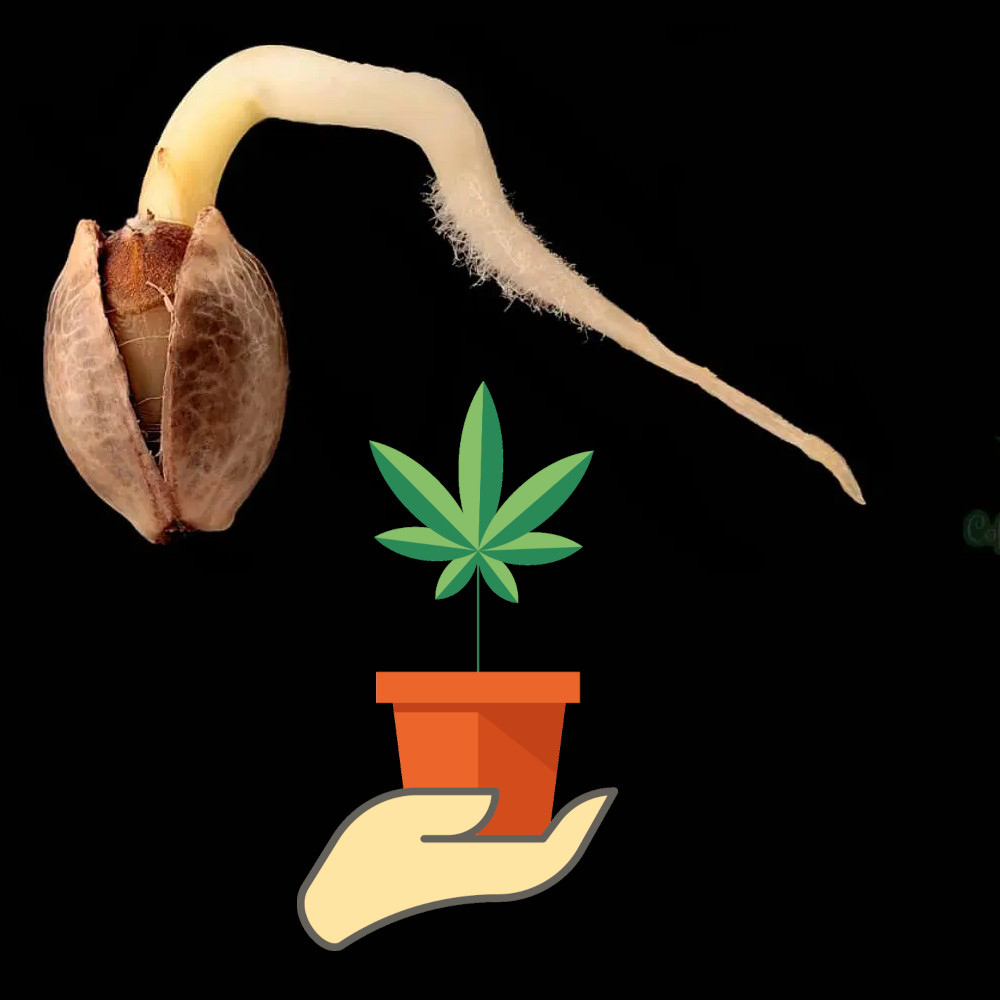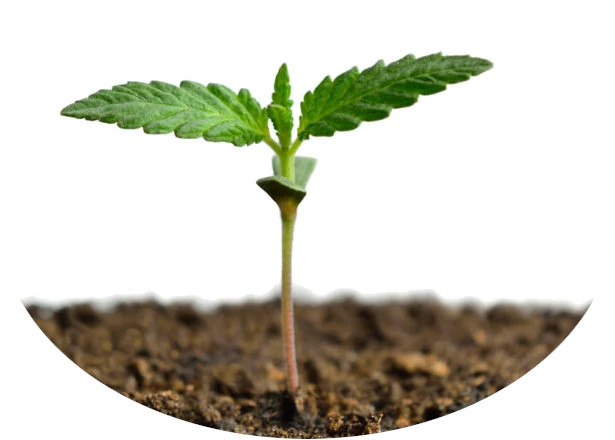Growing plants from weed seeds is a fulfilling and rewarding experience for many gardeners. However, achieving success can be a challenge, especially when it comes to germinated weed seeds. Knowing when to provide light, how long to wait for sprouting, and how to properly plant germinated seeds can make all the difference in their growth and development. In this comprehensive guide, we’ll cover everything you need to know about planting and growing germinated seeds. We’ll discuss the ideal timing for providing light, the average length of time it takes for germinated seeds to sprout, how long they typically take to break the surface, and the best practices for planting germinated weed seeds. Let’s get started!
When to Provide Light for Germinated Seeds
Germinating weed seeds requires specific conditions for success, and providing light is a crucial factor. As soon as your cannabis seeds have germinated and the taproot has emerged, you should provide them with light. Unlike other plants, cannabis requires a lot of light to grow, and the ideal light cycle during the seedling stage is 18-24 hours of light per day. You can use fluorescent light or LED grow light to provide the necessary light. Make sure to keep the light close to the seedlings but not too close, as this can cause heat stress or light burn. After a few weeks, you can reduce the light cycle to 16 hours per day to encourage vegetative growth.
How Long After Planting Germinated Seeds Do They Sprout?
The time it takes for germinated seeds to sprout depends on the type of plant, the growing conditions, and the quality of the seeds. For cannabis seeds, the average time for sprouting is 2-7 days, but it can take up to 10 days for some strains. The optimal temperature for cannabis seed germination is 70-80°F (21-27°C), and the humidity level should be around 70%. You can use a humidity dome or plastic wrap to maintain the moisture level. It’s important to keep the soil moist but not soaking wet, as this can lead to overwatering and root rot. Be patient and don’t disturb the seeds during the germination process, as this can cause damage or delay the sprouting. Once the seedlings have sprouted, you can remove the humidity dome and start providing light.
Tips for Planting Germinated Weed Seeds
Once your weed seeds have germinated and sprouted, it’s time to plant them in soil or a hydroponic system. Here are some tips to help ensure successful planting:
- Choose the right soil: Use high-quality, well-draining soil that is specifically formulated for cannabis. Avoid soils that are too dense or contain high levels of nutrients.
- Prepare the soil: Before planting, make sure the soil is moist and at the right pH level (around 6.0-7.0 for cannabis). You can add perlite or vermiculite to improve drainage and aeration.
- Plant the seedling: Use a pencil or something similar and poke a small hole 1 – 3 cm deep depending on the length of your exposed taproot. Place the seedling into the hole, making sure the taproot is facing down. Cover the germinated seed lightly with soil and very very gently press against the sides of the hole to ensure good contact with the soil.
- Provide nutrients: During the seedling stage, cannabis plants don’t need a lot of nutrients, but they do require some. You can use a mild, balanced nutrient solution or a slow-release fertilizer.
- Water the seedling: Water the seedling with a gentle stream of water to avoid disturbing the soil. Be careful not to overwater, as this can give you root rot.
- Maintain ideal conditions: To ensure the best growth and development, keep the seedlings in a warm, humid environment with plenty of light. Avoid overwatering, underwatering, or exposing the seedlings to temperature extremes.
By following these tips, you can give your germinated weed seeds the best chance for success and ensure healthy, vigorous plants.
Conclusion
Germinating weed seeds can be a tricky process, but with the right techniques and patience, you can successfully grow healthy and potent cannabis plants. Whether you’re a novice grower or an experienced cultivator, it’s important to pay attention to the needs of your germinated weed seeds to ensure their best chance of success.
In this article, we covered the best practices for germinating weed seeds, the ideal time frame for sprouting and breaking the surface, when to provide light, and how to plant germinated weed seeds. By following these tips and techniques, you can give your germinated weed seeds the best start in life, leading to a successful harvest and a rewarding growing experience.
Remember to keep the growing environment stable, maintain proper lighting and watering, and monitor your plants regularly to catch any issues early. With the right care and attention, you can enjoy a bountiful harvest of high-quality cannabis from your germinated weed seeds.


